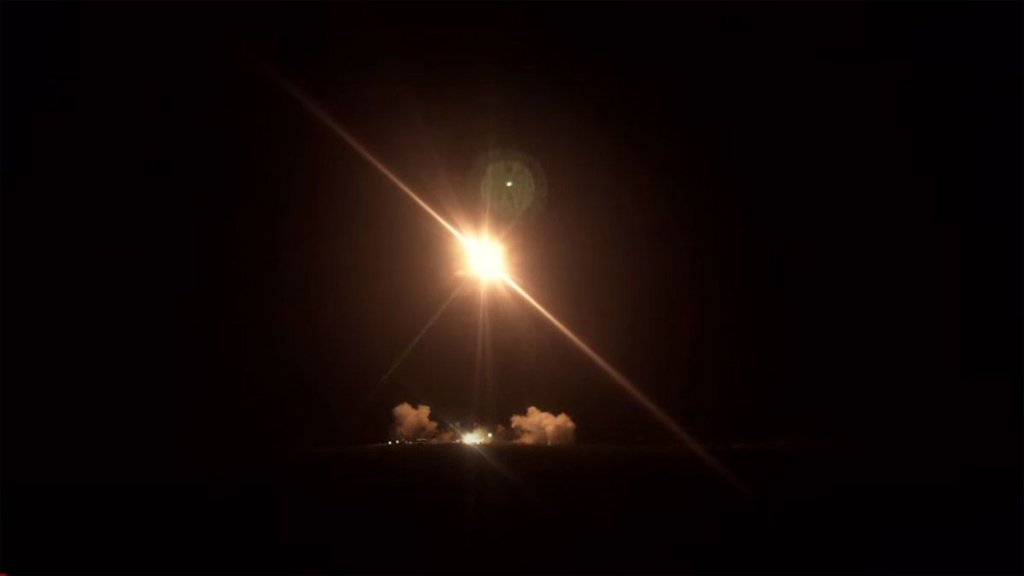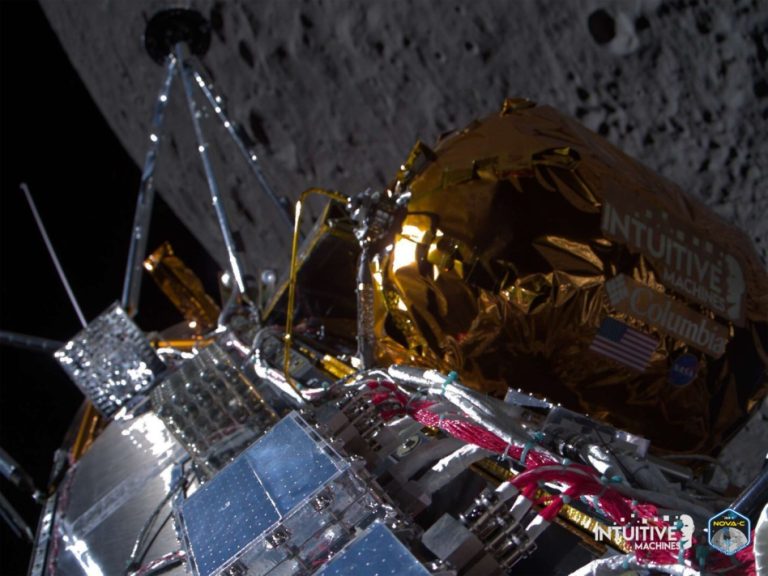
Rocket Lab launches 2 satellites, returns booster to Earth after delay from surprise solar storm (Image Credit: Space.com)
Rocket Lab’s early morning launch on Friday (March 24) got delayed by 90 minutes because of an unexpectedly powerful geomagnetic storm that space weather forecasters didn’t see coming.
Rocket Lab‘s Electron rocket eventually lifted off without a hitch at 5:15 a.m. EDT (0915 GMT; 10:15 p.m. local New Zealand time) from the company’s New Zealand launch site.
The mission, called “The Beat Goes On,” sent two Earth-observing satellites owned by Seattle-based company BlackSky into low Earth orbit.
About 19 minutes after lift-off, Rocket Lab confirmed its crews located Electron’s first stage in the Pacific Ocean after its splashdown on parachutes. The company’s engineers will now retrieve the stage and transport it on a ship to Rocket Lab’s facilities on shore for inspection and possible future reuse.
Related: Rocket Lab launches 1st Electron booster from US soil in twilight liftoff
The geomagnetic storm that caused the launch delay was, according to space weather experts, the most powerful in six years, reaching a G4 level on the 5-grade geomagnetic storm scale (opens in new tab). The severity of the storm was completely unexpected. The U.S. National Oceanic and Atmospheric Administration (NOAA), the world’s leading space weather forecasting authority, predicted only a minor G2 event one day ahead of the launch.
Geomagnetic storms are caused by intense bursts of solar wind, streams of charged particles from the sun’s atmosphere. When these particles interact with gases in Earth’s atmosphere, they change atmospheric density, which can cause problems to satellites in low Earth orbits. Last year, SpaceX lost a batch of 40 Starlink satellites after launching them into a relatively minor geomagnetic storm.
The Friday Electron launch, however, seemed to avoid the space weather trap and the two satellites were successfully released from the rocket’s upper stage 54 and 55 minutes after liftoff, respectively.
The two BlackSky satellites are headed to a circular orbit with a target altitude of 280 miles (450 kilometers). They’ll join 14 other spacecraft in the company’s constellation, nine of which were also launched by Rocket Lab.
“The two additional high-resolution, multi-spectral Gen-2 satellites will expand BlackSky’s network in space and offering of real-time geospatial intelligence and monitoring services,” Rocket Lab wrote in the mission’s press kit, which you can find here (opens in new tab).
“BlackSky’s proprietary constellation has one of the highest hourly revisit rates in the world, providing customers with persistent monitoring and change detection over areas of economic activity across the globe,” they added.
So how do we launch a rocket to space, bring it back to Earth under a parachute, splash it down in the ocean, and then pick it up with a boat to return it to our rocket factory? Pretty much like this.Our next marine recovery mission launches March 22nd, weather dependent 🌧️🌬️☀️ pic.twitter.com/VA5XFHGxTSMarch 19, 2023
“The Beat Goes On” marked Rocket Lab’s second launch in just over a week, following a liftoff from NASA’s Wallops Flight Facility in Virginia on March 16.
That Virginia launch was just the company’s second from American soil; 33 of its 35 orbital missions to date have lifted off from Rocket Lab’s New Zealand site, on the North Island’s Mahia peninsula.
All Rocket Lab missions so far have been flown by the 59-foot-tall (18 meters) Electron, which gives small satellites dedicated rides to orbit.
Electron is an expendable vehicle, but Rocket Lab is working to change that. The company has recovered boosters on several previous missions, on one occasion even plucking a falling Electron out of the sky with a helicopter. The recovered rockets survived their trips back to Earth in good shape, company representatives have said, so Electron reuse seems like a real possibility in the not-too-distant future.
Reuse will be built into Rocket Lab’s next vehicle, a larger rocket called Neutron; its first stage is designed to land vertically and fly again, like the first stages of SpaceX’s Falcon 9 and Falcon Heavy rockets. Neutron will fly for the first time next year, if all goes according to plan.
“The Beat Goes On” was originally supposed to launch early Wednesday morning (March 22), but bad weather pushed the liftoff back by two days.
Mike Wall is the author of “Out There (opens in new tab)” (Grand Central Publishing, 2018; illustrated by Karl Tate), a book about the search for alien life. Follow him on Twitter @michaeldwall (opens in new tab). Follow us on Twitter @Spacedotcom (opens in new tab) or on Facebook (opens in new tab).








